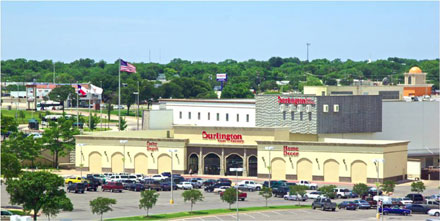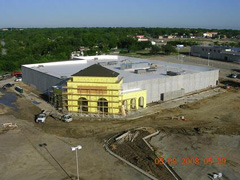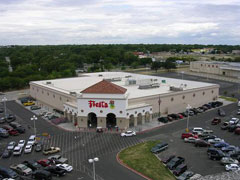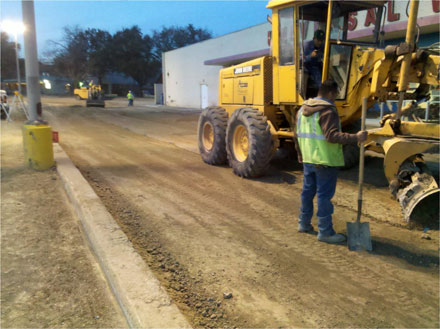by Matthew W. Singel, PE, Cement Council of Texas

The construction marketplace is always finding new areas to realize the benefits of full-depth ceclamation with cement (FDR). The rebirth of Fort Worth’s La Gran Plaza (LGP) another such place that has realized FDR’s true value. Originally constructed in 1962 as the open air Seminary South Shopping Center, it was extensively renovated in 1987, becoming the completely enclosed Fort Worth Town Center Mall. The mall is now in the latter stages of renovation that will launch its third life.
When the time came to assess the exterior site conditions, it was clear that the mall’s north parking area was in immediate need of rehabilitation. However, the work performed would have to be accomplished in a small window of time, in December and January. James Wicker, property and project manager for Boxer Property Management Corporation, the mall’s owner, turned to Gary Ardis of Anderson Paving, Inc., for solutions. Anderson Paving, a Dallas-Fort Worth contractor for more than 50 years, is a full-service pavement and base construction outfit. The challenges presented by the short timeline intensified a particular tenant required that select portions of the lot could only be shut down for four days. Assessing this daunting task, Ardis determined that the FDR process would be the best option to reconstruct and recycle in-place the 25,000 square yard, deteriorated asphalt pavements.
Construction commenced in December of 2010 with a 500 horsepower reclaimer pulverizing the failed asphalt pavement and underlying layers to a nine-inch depth. The prescribed six percent cement and necessary water were mixed in to a depth of 10 inches, graded and compacted to 96 percent of the maximum dry density.

LGP during construction

LGP after project completion
The resulting cement–stabilized reclaimed base enabled the owners to benefit from a reduced construction time and cost savings while providing the proven long-term performance of a cement-stabilized base. The stabilized areas were paved the following day with a two-inch hot-mixed asphalt surface course. The results were impressive. “By recycling we were able to do the project in sections that could be completed and returned to service, including striping for parking, within the four days. Working around inclement weather, including a major freeze and ice storm, we met the centers requirements to get the work done while keeping businesses open,” recalled Ardis.

There were other benefits realized by using the FDR process. Ardis stated, “The recycling process also allowed us to alter the grades of the parking lots to improve poor drainage and bring areas of handicap parking/access into compliance for slope. Neither of these alterations added any significant cost to the project.”
Shaping the compacted FDR base at the LGP site
Ultimately, the project costs totaled slightly more than $350,000. This $14 per square yard price included cement reclamation of theexisting pavement, asphalt surface course, and all required paint striping. Wicker is thrilled with the full-depth reclamation rehabilitation process and its many realized benefits. On a personal note, the Fort Worth native said, “This is where we shopped growing up. I am excited to facilitate the successful renovation of this landmark and see it reunite the community once again.
The renovation successes at La Grand Plaza have taken it from occupancy rates well below 50 percent to nearly 90 percent and climbing. La Grand Plaza has become the model for the Plaza De Americas in Houston (another Boxer Property Management project) and other retail malls across the country.
Read more about how FDR provides a tremendous reduction in wasted material in Full-depth Reclamation: Recycling Roads Saves Money and Natural Resources SR995.